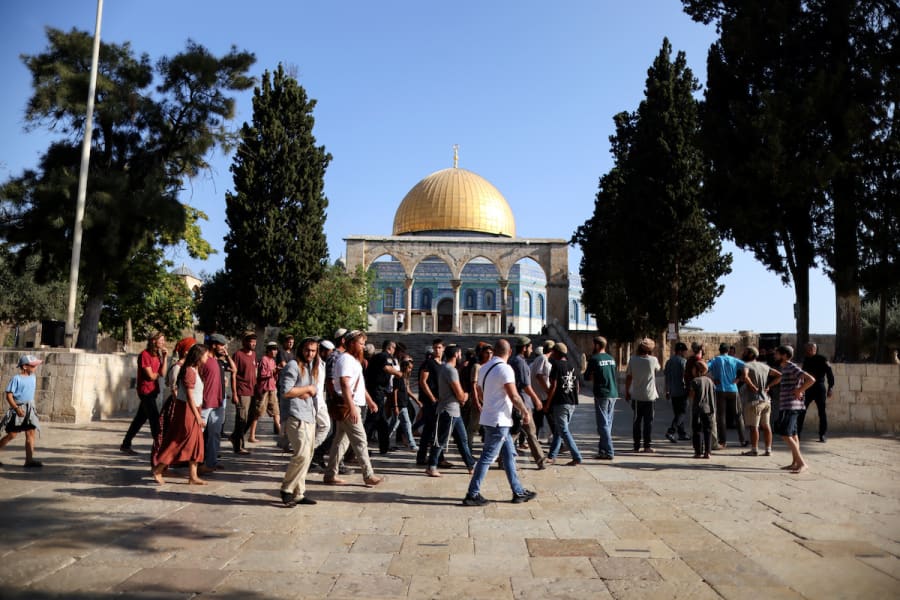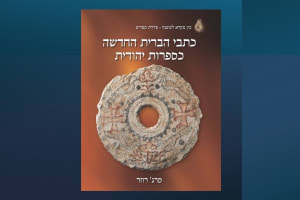Hope of redemption drives Jews to ascend Temple Mount on Tisha B’Av
Explaining the significance of praying on the Temple Mount on Tisha B’Av – and why it was even more controversial this year

More so on Tisha B’Av than on any other day of the year, Jews ascend the Temple Mount in Jerusalem to mourn the destruction of the Temple on the very site where it once stood.
This year, Tisha B’Av – the Ninth of Av on the Jewish calendar – fell in the midst of clashes between Israel and Palestinian Islamic Jihad (PIJ) in the Gaza Strip with more than 1,000 rockets fired at the Jewish state and Israeli air strikes on PIJ targets in Gaza between Friday and Sunday.
Nevertheless, more than 2,200 Jews lined up to ascend the Temple Mount on Sunday. And not just any Jews. The firebrand Knesset Member Itamar Ben Gvir and other Temple Mount activists such as Yehudah Glick were among those who went that day, despite threats of further attacks by both PIJ and Hamas.
WHAT IS TISHA B’AV?
The month of Av on the Jewish calendar always falls during the summer months of July or August on the Gregorian calendar. The date Tisha B’Av – meaning the ninth day of the month of Av – is associated with tragic events in Jewish history, most famously the destruction of both the First and Second temples.
The receptive pattern of catastrophes occurring in this same period of time over the centuries is taken seriously, especially here in Israel. Jews observe the day with mourning and a 25-hour fast of food and water. In Israel, many establishments of entertainment are closed and some Jews will avoid traveling by plane during this period of time.
Other tragedies that fell on or around the date include the massacre of the Jews under Simon Bar Kokhba in 135 A.D.; the pogroms of the First Crusade (1096–1099) and destruction of Jewish communities along the Rhine beginning on Aug. 15, 1096; the expulsion of the Jews from England on July 18, 1290, from France on July 22, 1306 and from Spain on July 31, 1492.
The “Final Solution” was approved on Aug. 2, 1941. The bombing of a Jewish community center in Buenos Aires, killing 85, took place on July 18, 1994 – the 10th of Av. And in 2005, the disengagement from Gaza occurred during this time as well, when the government of Israel uprooted Jews living in the Gaza Strip – many by force – and relocated them to temporary homes in Israel.
Some believe Tisha B’Av was also the date the 10 spies reported to Moses that they were unable to take the Promised Land, contrary to the report of Caleb and Joshua, setting in motion a series of tragedies in this season.
In addition to fasting, Jews read the Book of Lamentations. One rabbinical scholar noted that the book follows an alphabetical sequence until it reaches the letter ayin (which means eye in Hebrew). Instead of ayin, the letter peh (which means mouth) takes it place indicating “speaking before seeing” – an act that leads to baseless hatred and, hence, anti-Semitic acts throughout history.
HOPE FOR REDEMPTION
This annual mournful observance and other specific fasts mentioned in the Bible, however, are meant to bring about promised redemption.
“This is what the Lord Almighty says: ‘The fasts of the fourth, fifth, seventh and tenth months will become joyful and glad occasions and happy festivals for Judah. Therefore love truth and peace.’” Zechariah 8:19
The date of 9th Av marks the end of the “Dire Straits,” a three-week period that begins with a fast – the fast on the 17th of Tammuz – and is set aside to repent and ask for forgiveness, like Daniel did for the sins of his forefathers, “in prayer and petition, in fasting, and in sackcloth and ashes.” (Daniel 9:3-19).
On this year's Tisha B’Av, some went barefoot, unshaven, singing songs of mourning. Ironically, other Jews – abiding by rabbinical rulings that prohibit anyone but high priests to walk on holy ground – urged them not to go there.
Among those who ascended the Temple Mount were Ben Gvir, conservative Jewish-American commentator Ben Shapiro of The Daily Wire and, of course, Glick – the rabbi, former Knesset Member and Temple Mount activist – who led a group of Christians up that day.
While the Temple Mount is open to anyone, only Muslims are allowed to pray there and permitted to visit at all hours. Non-Muslims may only enter at set times – a bone of contention that leads to frequent violent flare-ups in Jerusalem.
The question this year is whether the prayerful ascended as an act of supplication and obligation or if some did so as an act of political defiance.
But at least the ascent on Sunday ended without any retaliation by either PIJ or Hamas or clashes with police.
And, hopefully, it represented another step toward the redemption, as prophesied by Zechariah, of this season of time.

Nicole Jansezian was the news editor and senior correspondent for ALL ISRAEL NEWS.














